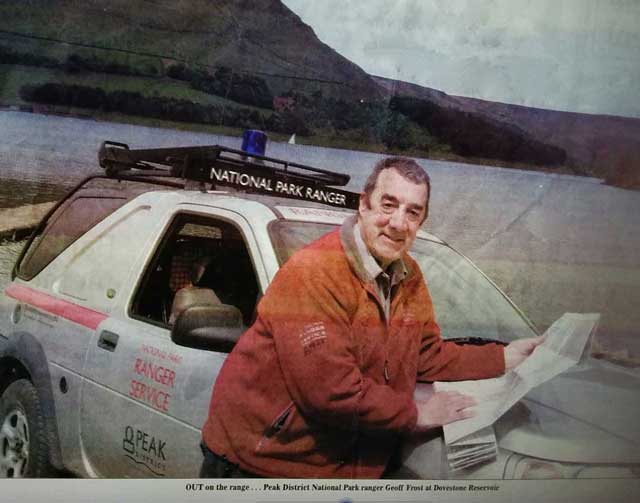In the middle to the late 1980s, plans were in hand to re-route water filtration to the newly built Buckton Castle Works at Mossley. This entailed new pipes leading from the original Filer Plant at Ashway all the way to Mossley. The main pipe is now under the path on this (western) side of the reservoir. The contractors were going to landscape the ground back to a slope leading to the edge of Dove Stone reservoir. Following a meeting of the Dove Stone Working Party (the management team at that time for the area), it was suggested that the full length of the newly dug pipeline be flattened and surfaced to bring a new facility of allowing access for people in wheelchairs. This was duly carried out and provided a much better surface for all visitors.

The yellow line highlights the main footpath prior to the new disabled access path. This went through the woods and was only accessible to walkers. or runners. The only path along the edge of the reservoir was a narrow track made by sheep.

Works associated with laying the pipeline that goes all the way to Buckton Castle Treatment Works in Mossley. The Ashway Filter Plant as shown was constructed in 1912 and will become redundant after the new pipes have been connected.

As it is today

The reservoir was emptied somewhat during the pipeline works

Looking towards Dove Stone dam during the making of the disabled access path

Looking towards Ashway Filter Plant during the making of the disabled access footpath

Checking out the incomplete path with a wheelchair 1987

Almost complete

The path is finished with a grey limestone surface and flattened by a power roller
The footpaths photos below (which was the main footpath before the disabled access path in 1989) shows how a wet path makes people step to one side thus causing another footpath and in this case even a third footpath. In 1986 rangers and volunteer rangers decided to make it into one reasonable path by digging out a drainage channel and resurfacing work. The final photo shows the present condition which has proved the work was worth the effort.



Drainage channel dug by hand with spades for the full length of the path

This photo shows the path as it is in July 2016 at almost the same position as the photo above (not exact owing to the camera level)


